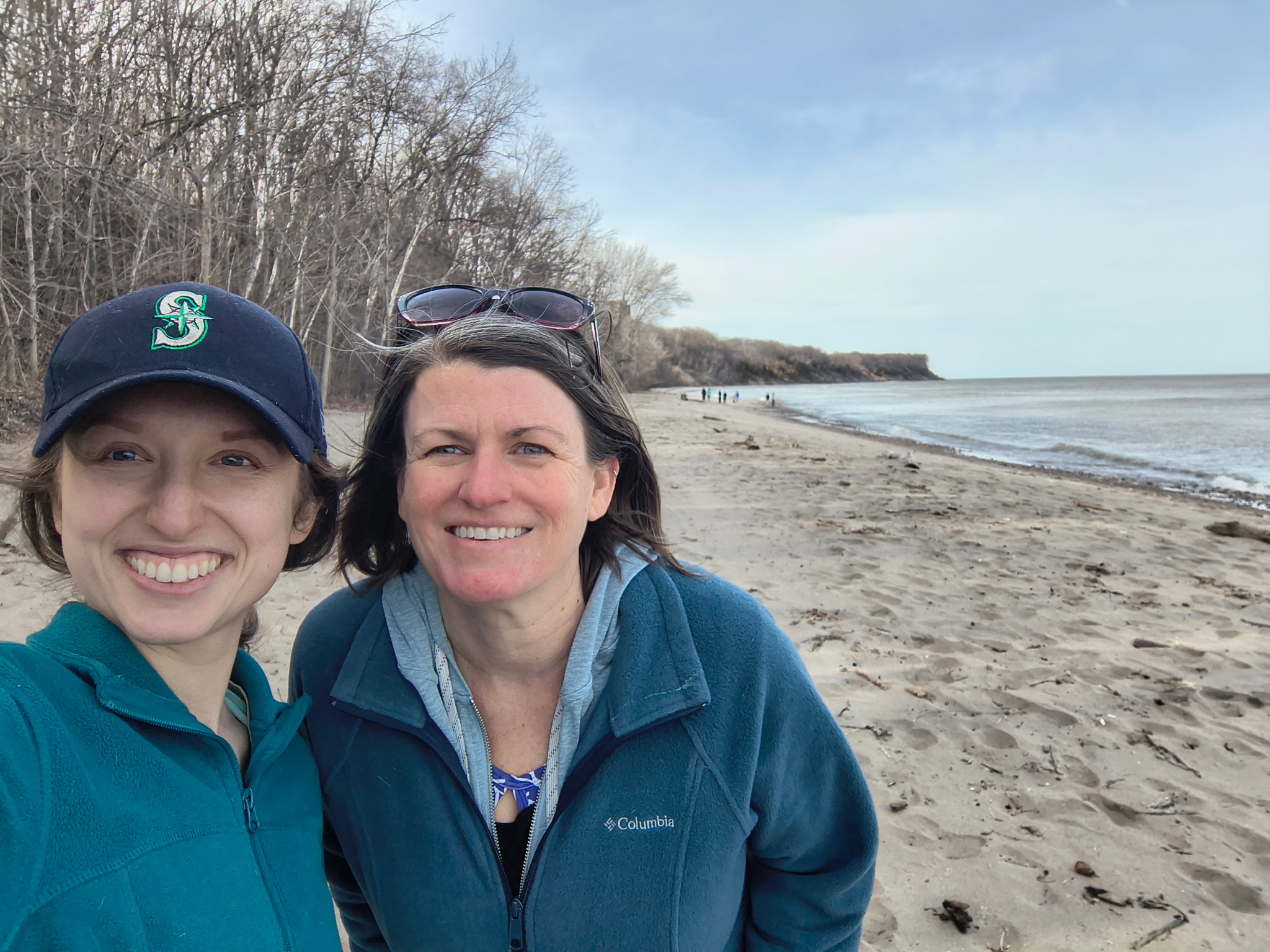First, they developed the test. Now they’re using it to track a stealthy, fish-killing virus.
In 2013, Tony Goldberg, a UW-Madison professor of epidemiology, and Kathy Toohey-Kurth, a virologist at the Wisconsin Veterinary Diagnostic Laboratory, used funding from Wisconsin Sea Grant to lead a team that created a quick and accurate test for viral hemorrhagic septicemia virus (VHSV), a deadly disease that attacks the internal organs of fish, leading to bloody and large-scale fish kills. Over the past year—again with support from Wisconsin Sea Grant–Goldberg and his research team have ventured into the rivers and streams of Wisconsin, from the Apostle Islands to Janesville and the Wisconsin-Illinois border, working with the Wisconsin Department of Natural Resources to collecting fish samples to test and track the virus’s current locations and movement among fish populations.
The goal? Developing an effective management strategy to contain VHSV.
“If we catch wildlife diseases early, there’s a lot we can do about them,” said Goldberg. “There’s a window where you can intervene and be adaptive and smart and prevent or even get rid of some diseases with really careful management. VHSV will not be the last fish disease to plague Wisconsin. If we do this exercise and are effective with it, we have a test case, an action plan for the future.”
Taking steps toward that plan has involved a substantial amount of fish sampling and laboratory work. Last fall, Goldberg’s team collected samples from several thousand fish across most of Wisconsin’s major geologic zones. Whitney Thiel, a graduate student in UW-Madison’s freshwater and marine sciences program, has spent the intervening months performing enzyme-linked immunosorbent assay (ELISA) tests on the scores of fish samples, generating data on the fishes’ antibody levels, which rise in response to an exposure to diseases like VHSV.
The data will help the team solve the project’s biggest mystery—finding the specific cutoff point between negative (never exposed to VHSV) and positive (exposed to VHSV) fish.
“This test has never been applied to many of these fish species before,” explained Goldberg. “Once we’re able to say what proportion of fish in a lake are serologically positive or negative, that will tell us where in Wisconsin fish have an immunity to the virus.”
That’s critically important information to have, particularly for fisheries managers. VHSV is particularly insidious. Past research (including Goldberg’s) indicates that it can lie dormant in fish population for years, a lurking threat in the absence of visible fish kills. Goldberg studied freshwater drum in Lake Winnebago, using the test his team developed to discover that the fish were maintaining the virus at low levels.
“We know from experience that if you have a naïve population and expose them to the virus for the first time, it’s bad–you get fish kills,” explained Goldberg. “If we have areas where there are a lot of positive fish, we would want to make sure we didn’t move fish out of there into other areas. If we know our fish hatcheries are free of the virus, we might want to stock fish preferentially into lakes that don’t have the virus so they don’t all die and we don’t waste our money.”
Researchers still don’t know how VHSV manages to persist within lakes. Several possible explanations exist, including the fish shedding the virus during spawning. One of Goldberg’s colleagues at Michigan State University, Mohamed Faisal, recently conducted a study that suggested the virus may be associated with Diporeia, the microscopic Great Lakes zooplankton that historically served as a primary food source for multiple fish species.
“We have a virus that wasn’t here before, and it’s pretty clear it kills fish,” Goldberg said. “So what do you do about it? You have to know where it is. If we just close our eyes and choose not to know where the virus is, it’s just going to spread. We need to set management zones, we need to know which fish to move, we need to educate the public.”
Thiel still has several more months of sample testing to complete before a clearer picture of VHSV in Wisconsin can emerge. In the coming weeks, the research will be taking samples from infected fish to better understand how their immune systems respond to it.
“Honestly, at this early stage, I would not be surprised by any result,” said Goldberg of the ongoing study. “The only thing I’m pretty confident in is that we’re going to find positive fish where we have found them before.”





